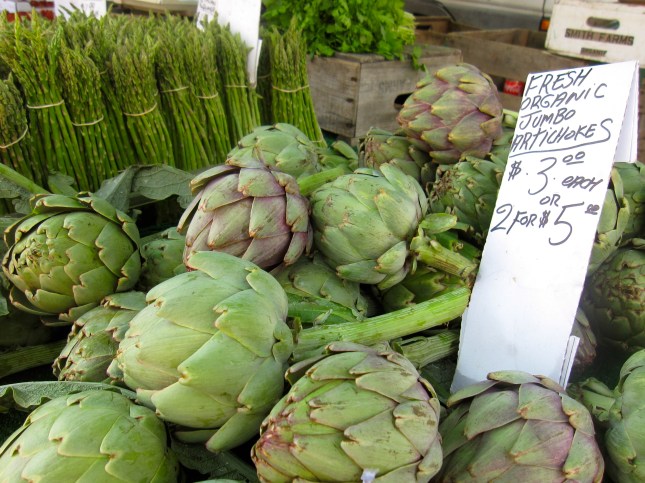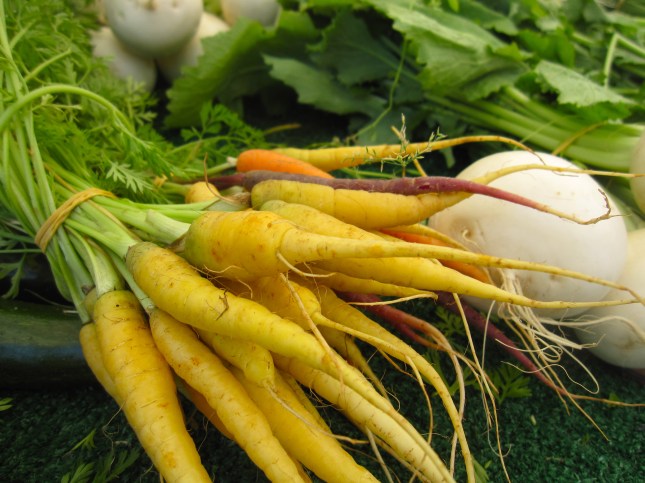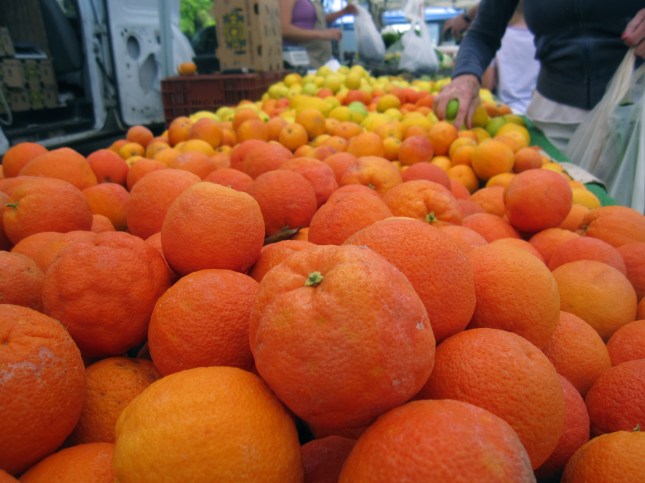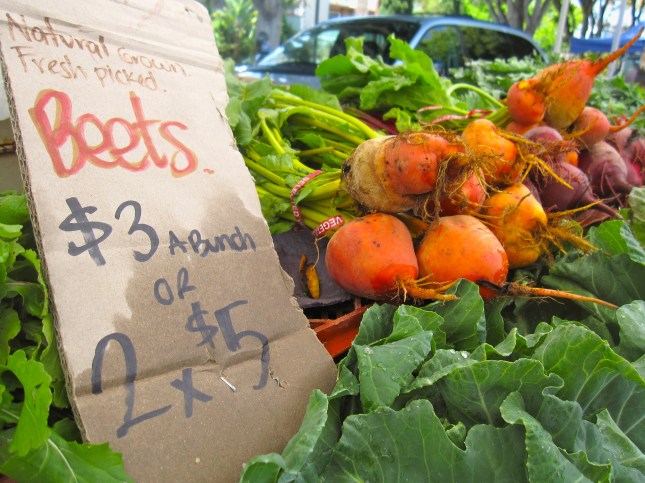June 17th. Oh yes, just twenty-eight days left to patiently await the arrival of my neighborhood farmers’ market. It’s not easy, having been spoiled by my time in California and the plethora of produce there, always available, 365 days a year. You know what they say…you don’t realize what you have until you no longer have it!
In California we have the luxury of eating seasonally. This was something I began trying to do about two years ago. I committed to buying as much of my produce from the farmers’ market as possible. This meant giving up things like tomatoes in January. And blueberries in November. But it also meant a greater appreciation for eating what the earth wants to naturally give me. On its own time.
I didn’t quite realize just how much of a luxury this way of eating is until moving to New England. Here, January offers not only a lack of tomatoes but also an abundant supply of what seems like nothing more than root vegetables and apples. Unless you grow all your own produce or have regular access to farms, you’re limited to grocery stores because farmers’ markets aren’t up and running all year long. So, while roasted root vegetables and homemade apple pie are admittedly delicious, the thought of having only that for months on end renders the choice to eat seasonally less than appealing.

Sitting in class one day during the winter this became quite apparent. We were engrossed in a lively discussion about organics and genetically modified foods (nerd alert), when I asked what seemed like an innocuous question about the choices between eating ‘organically,’ ‘locally,’ and ‘seasonally.’ The looks I got screamed, “Oh, right! You’re the girl from California. You haven’t yet lived through a winter of 101 ways to eat root vegetables!”

The conversation that ensued was super interesting. (That’s my super duper non-academic description for you.) It was obvious that I had developed some serious opinions (this is not shocking) about the pros and cons of eating in one or all of these three ways. The proper order of importance was (1) seasonal, (2) local, (3) organic. Obviously! Or not. As I’ve mentioned before, the beauty of the graduate program I’m in is the continual way my eyes are opened, my opinions are challenged, and my perceptions are flexed. Everyone held these three ideals at different levels, placing each in a different order of importance. It was fascinating.

I’m curious…what are your ideals when making food choices? What value, if any, do you place on eating organically, locally, and/or seasonally? These decisions are not easy, especially the more you know about the food you consume. Let’s take a second to break down these ideals…and briefly enter my newfound world of food academia! Bear with me.

The ebb and flow of these beliefs stem from the abundance of information we’re engulfed in regarding food these days. Information that is sometimes helpful, and often not. And the abundance is a result of the rapid growth in the public awareness of the food movement.
The public focus of today’s food movement broadly centers on creating alternatives to every element of the food system, from grower to producer to consumer. And unless you live under a rock, it’s hard to avoid the knowledge that this movement is growing rapidly. It offers a broader lens through which people can consider elements of society and politics, and out of which they can become involved to some degree. Sounds good, right? The American public is realizing that food is pervasive and all-encompassing, and therefore powerful. And because of the food movement’s varied origins in the counterculture and politics of the 1960s and 70s, a number of philosophies regarding the production and consumption of food are now incorporated into the overarching movement, including the organic, local, and seasonal ideals.

Organic farming methods have a long history in agricultural production. As the initial ideology espoused by the movement of the late 60s in an effort to protect America’s ecology from the threats of industrialized agriculture, organic agriculture promotes methods that support the natural resources and cycles of the ecosystem. This is accomplished by growing all the fruits and veggies we love without the use of pesticides, added chemicals, or genetic engineering. Better for them, better for us.
Eating locally means consuming foods grown and produced within a certain radius from where you live. The number of miles used to value ‘local’ can vary, but a good rule of thumb is 100 miles. Good for local businesses, communities, and good old-fashioned producer/consumer relationships.
Then comes eating seasonally. As I hint above, this means eating fruits and vegetables only when they are “in season.” It’s hard to remember that this concept even exists, given the fact that in America we’ve grown so accustomed to being able to get just about any food whenever we want it. But eating seasonally can be better for the earth when it promotes the natural ecology.

So, as you make your produce choices this week (and I certainly hope you do make produce choices!) I encourage you to consider what role ‘organic,’ ‘local,’ and ‘seasonal’ play in your decisions and why. Take a second to think about it. After all, much of the value in a decision is knowing why you’re making it in the first place.


Your photos are absolute stunning – mouthwatering … all those choices.
Living in Sweden we don’t have any local vegetables or fruits until the summer and it’s for such a short time. We have to get used to it, imported 70% of the year, but we have the best strawberries, potatoes, fish and seafood in the world. Have to be happy for what we got, imported or not.
Plus over 50% of us starving in the world, too many of us can’t be picky.
This is a great blogpost!
I think my order is a) organic, b) local c) seasonal.
We have got a farmer’s market in our neighbourhood, but it is so expensive that I can’t buy much frum it (only eggs, that’d work.). Additionally, farmer’s market is on days when I’m at university or work, so that’s not an option either … *sigh*
But prices depend. My grandparents buy a LOT from the farmer’s market – and where THEY go, they’ve got reasonable prices one can actionally afford. 🙂
But even if I buy my eggs usually in the supermarket, I buy the ones that are a bit more expensive but answer European standarts, so I can be sure that the hens have a kind of decent life style.